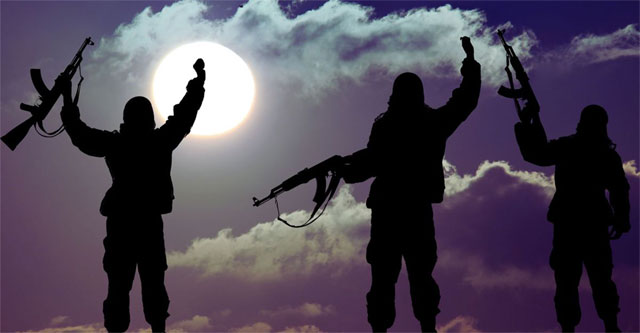Daijiworld Media Network - New Delhi
New Delhi, Oct 21: The Pakistan Army is grappling with deepening internal and external crises, as a surge in militant activity, internal divisions, and rising ethnic tensions expose its growing vulnerability. From terror groups turning against their creators to unrest in Balochistan, the establishment finds itself cornered like never before.
Recent events like Operation Sindoor have laid bare the structural weaknesses within the army, with heavy casualties inflicted not by foreign forces, but by the very terrorist outfits Pakistan once nurtured. The Tehreek-e-Taliban Pakistan (TTP) continues to hammer the military despite a fragile truce, emboldening other radical factions such as Lashkar-e-Jhangvi (LeJ) and the Islamic State Khorasan Province (ISKP) to challenge state authority openly.

Security analysts believe that the TTP, LeJ, and ISKP now share a common goal: to dismantle the current establishment and impose a radical Islamic order.
Each of these groups, though different in their tactics and scope, is united by the view that the Pakistan Army is no longer an untouchable force.
The LeJ, long known for its brutal sectarian violence, has already targeted state institutions in the past. There are growing concerns that it could realign with the ISKP or even the TTP—both alliances it has previously explored. A revival of such collaborations could significantly escalate threats to national security.
The ISKP, which Pakistan originally brought in to counter the Afghan Taliban and the TTP, is reportedly re-evaluating its position. With a ceasefire in place between Pakistan and the Afghan Taliban, ISKP's strategic relevance to Islamabad has diminished. It is more likely now to forge ties with LeJ, given its strained relationship with the TTP, which is seen as having ideological links to the Afghan Taliban.
Despite the potential lack of coordination among these outfits, their shared knowledge of the army’s operational weaknesses positions them to strike hard—individually or in loose alliance. Intelligence agencies warn that attacks on the establishment are likely to intensify regardless of whether these groups join forces or not.
Adding to Islamabad's troubles, traditional proxies like Jaish-e-Mohammad (JeM) and Lashkar-e-Tayyiba (LeT) are no longer reliable bulwarks. JeM, with its ideological sympathies toward the Afghan Taliban and the TTP, could fracture if forced to turn its guns on them. LeT, though historically loyal, has also shown signs of internal dissent—especially during the period of Pakistan’s cooperation with the US in Afghanistan, when some cadres threatened to defect.
Meanwhile, a very different threat looms from the restive province of Balochistan, where nationalist and separatist groups have stepped up their campaign against the Pakistani state. Unlike the jihadist outfits, these groups are driven by ethnic and secular ideals, demanding independence and an end to what they view as Punjabi-dominated military control. Their attacks have targeted army personnel and Chinese nationals tied to Beijing’s investments—further denting Pakistan’s international credibility.
As the Pakistan Army finds itself besieged on multiple fronts—from religious extremists to ethnic insurgents—its ability to control the growing storm appears increasingly uncertain. With traditional allies wavering and former assets turning into existential threats, the days ahead may test the very foundations of Pakistan’s security establishment.